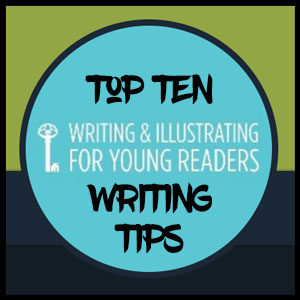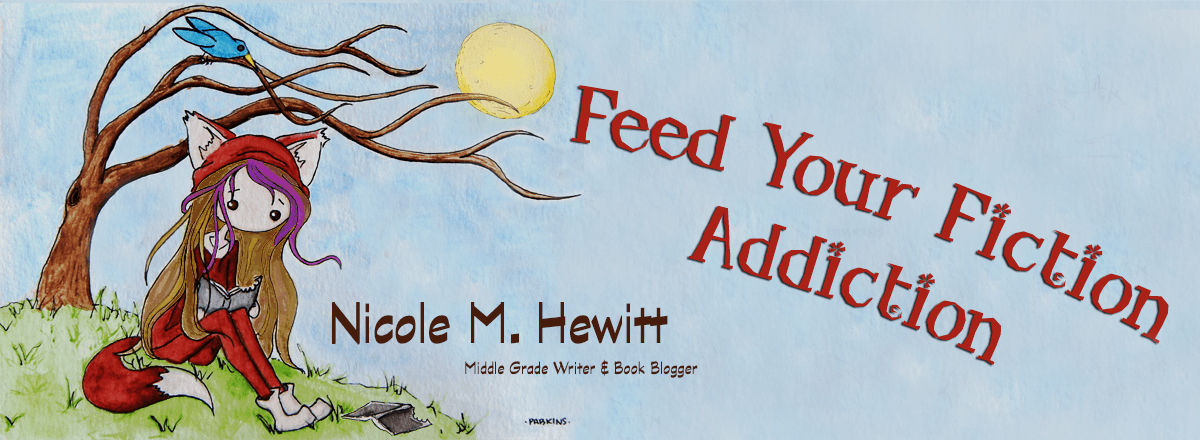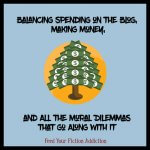
I took in a lot of fantastic writing advice at the WIFYR conference. I thought I’d share my some of the lessons I learned with all of you. All of these came from the breakout sessions or keynotes. I tried to keep these specific to writing advice rather than publishing/querying advice, but I’ll probably do another post with some great points that were made when it comes to querying!
Top 10 Writing Tips I Learned at WIFYR
- Books are made in revision, and you can’t revise nothing. So write! This is a quote from Trent Reedy’s revision class and it’s pretty simple, but also really profound. So often we want to get things right the first time around, and we can be so focused on perfection that we don’t end up really accomplishing anything at all. You can’t revise what you don’t write! Trent also talked about the importance of having a chapter list where you track important elements of the book. You can color code it so you can keep track of certain elements like characters, plot points, etc.
- The more you write, the more you increase your chances for success. This one came from Ann Cannon. It’s similar to what Trent said, but Ann’s point was more about having a lot of different writing projects and ideas. The more prolific you are, the better your chances of having something that matches the market.
- If your book has a moral message, let it come out of the story instead of vice versa. Often it’s best to share a truth that you need to know. (If you struggle with something, kids probably do too.) This was from Claudia Mills’ session.
- The first chapter is all about emotion. Make the reader care! You should also set the tone in your first chapter. Be sure not to use a ‘bait and switch.’ For instance, where the first chapter feels really dark but then the book suddenly turns comedic. (This came from Alyson Heller.)
- Make dialogue tags as invisible as possible. Anything other than said, asked or continued should be used very sparingly. The best dialogue tags aren’t tags at all but action indicators. (Samantha Millburn)
- Use camouflage to drop a hint without setting off reader radar. This was from J. Scott Savage. He gave an example of how he wanted the kids in his book to use a flying car to escape. He didn’t want the car to show up out of nowhere, so he had to mention it, but he didn’t want it to be obvious either. So, he had them walk into a warehouse full of all sorts of crazy vehicles, The car with wings was just one of many, and it was camouflaged.
- Take your current emotional state and write it into your book. You don’t have to write in chronological order. If you’re having a day where you’re feeling sad or angry, you might want to channel those feelings and write a scene that involves anger or sadness. (From Ann Dee Ellis)
- Dialogue should reveal, create, engage and interact with your reader. Also, punctuation is important in dialogue. Well-thought-out punctuation can emulate natural speech patterns and rhythms. For instance, using emdashes to indicated overlapping speech. (From Heidi Taylor Gordon)
- Challenge yourself to always be gracious. Someone else’s accomplishments are not your failures. This sounds easy when you’re starting out, but it gets harder when you’re in a period where things are going wrong. (From Ann Cannon)
- Big emotional moments take time. These types of moments are the best places to use rhetorical devices. — I learned about several rhetorical devices from this session that I wasn’t specifically aware of and it made me want to learn more! (From Rosalyn Eves)
Those are just a few of the things I learned, of course. There were so many fantastic sessions at WIFYR. If you’re looking for a great writing conference, and especially for an opportunity to workshop your writing, I highly recommend it!




Great tips! It sounds like a productive conference.
It definitely was!
Thanks for sharing these Nicole! Sounds like you learned a ton and actually there were a couple that I hadn’t consciously thought about but will now actively use. <3
Yeah, some of these seem semi-obvious, but focusing on them makes a big difference!
I keep seeing this thing going around Pinterest that’s like, “270 words to use instead of ‘said’!” And I’m just like, nooooooooooo. People don’t need to constantly hiss and exclaim and blurt and whatever else.
The camouflage type is a good one! Sometimes, even in adult books, I come across something and I’m like, “Well I guess that’s going to be important later,” since it was just randomly pointed out for no apparent reason lol.
Thanks for sharing these tips! I’m off to look up rhetorical devices!
Yes, and honestly, I went and stripped some of those non-said words from my book! I think it used to be more of a thing where people would recommend using other words, but then people realized that those words were actually intrusive. You don’t want people to notice your dialogue tags all that much. They’re okay to use occasionally, but you really want to go easy on them.
I thought the camouflage thing was sort of brilliant. I hadn’t really thought of it, but it makes so much sense!
And there were SO many rhetorical devices that she mentioned that I hadn’t given much thought to. I mean, we all know the obvious ones like metaphors and similes, but there’s so much more to it than that. I’m planning to research this a lot more.
These are all such amazing tips! I’m glad you enjoyed the conference
It was really fabulous!
Aw yay, this sounds awesome! I cannot even imagine how much knowledge there must be out there from authors who have been through it all! I am so, so happy that you were able to have such an amazing opportunity! Thanks for sharing them
Yeah, it was really hard to figure out what to share because I learned SO many amazing things!
Thanks so much for sharing all of this. Very good advice, and I will have to keep it all in mind when I get back into my own writing.
-Lauren
http://www.shootingstarsmag.net
I’m glad it’s useful!!
Awesome tips. I especially like the first one and the dialogue tips as well. I occasionally struggle with how best to do dialogue so those are good to know!
She gave some great examples of dialogue that uses punctuation to emulate speech well too. I’m sure if you do a web search there are probably examples out there too.
Such great tips! One of my teen nephews is writing a novel as part of a school assignment so I’ll have to share your post with him. I think these would be really helpful for him. Great post!
Oh, how awesome! My One Year Adventure Novel class did that too, and it was a great experience!
These are some great tips and things that I need to keep thinking about as I write! Thanks so much for sharing these. I’ve bookmarked this post to come back to when I need the reminders.
I’m glad the tips are helpful!!
Thank you for sharing these invaluable tips and lessons from the writing workshop. Even though I am not (yet) an aspiring writer, these things gave me some perspective on doing book reviews.
I love that you said “yet.” You never know, right?
Great list here! I agree with them all.
I learned SO much at this conference. It was a great experience!
OH fantastic tips, thank you so much for sharing these, will have to remember that, especially that first one about revision haha
That’s the hardest part, right? Especially those days where we get stuck. It’s easy to get caught up in that and just put our writing “aside” for a while. Remember that revision is always the most important part!!
I love what you said – The first chapter is all about emotion – the books I always end up loving the most always grab my emotions in the beginning. Whether it’s subtle or more, I love that feeling. I’m so glad you learned so much at your conference and thanks for sharing!
I agree. A book that can capture your heart right from the beginning is a sure win!
[…] Top Ten Writing Tips I Learned at WIFYR-Nicole shares some great tips she picked up from a writing conference. […]